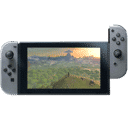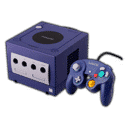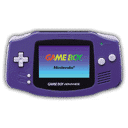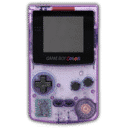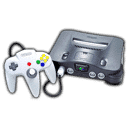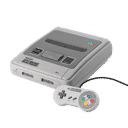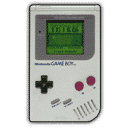
Summary:
Nintendo’s leadership has mapped a clear path to grow without losing what makes Nintendo feel, well, like Nintendo. Three priorities power that path. First, strengthen game development from the inside out—by investing in internal teams, acquiring familiar partners as subsidiaries when it makes sense, and expanding facilities in Kyoto to house more creators. Second, build software assets in non-game entertainment—especially films—after the breakout success of The Super Mario Bros. Movie proved that Nintendo’s characters travel beyond the console. And third, deepen relationships with players using the Nintendo Account system as the connective tissue, so touchpoints continue long after a purchase. Together these moves protect craft, widen the audience, and keep the bond with fans alive across devices, ages, and years. Below, we unpack how acquisitions differ from megamergers, what the new development center enables, why cinema fits Nintendo’s DNA, and how Accounts turn one-off moments into lifelong memories. Expect practical changes—more internal capacity, more films, and smoother, more personal experiences that welcome everyone from first-time players to multi-generation families.
Building a stronger Nintendo for the long run
Nintendo is putting real weight behind three linked priorities: making better games more efficiently, extending its worlds into film and other visual media, and maintaining deeper connections with players across their lives. None of these are flashy bullet points; they’re the kind of foundational changes that last. Strengthening development includes growing internal teams, acquiring select partners as subsidiaries, and expanding facilities in Kyoto with a new Corporate Headquarters Development Center, Building No. 2. Non-game entertainment gets a dedicated lane after the global success of The Super Mario Bros. Movie, with leadership signaling a desire for a steady cadence of films tied to beloved franchises. And binding it all together is the Nintendo Account system—a way to keep touchpoints alive well beyond any single console cycle. In short, the plan multiplies creative capacity, multiplies audiences, and multiplies moments of contact, so great experiences can scale without losing the charm and craft players expect.
Why strengthening game development comes first
Games remain the heart of Nintendo. The fastest way to protect that heart is to ensure development capacity keeps pace with ambition. Strengthening internal development does more than add headcount; it knits together tools, teams, and timelines so craft improves and risk drops. When internal groups can iterate in the same building, across shared pipelines, feedback loops get shorter and prototypes become play sooner. That efficiency matters whether the next release is a fresh IP, a genre twist, or a mainline sequel with a gigantic audience waiting. It also cushions schedules; if one project slips, an aligned pipeline can help others fill the gap. Add modern facilities and you unlock training rooms, usability labs, and tech floors dedicated to engine work and R&D. The outcome isn’t just more games—it’s steadier quality, healthier teams, and the confidence to attempt new ideas without gambling the yearly slate.
What acquisitions mean (and what they don’t) for Nintendo’s culture
Here’s the nuance: Nintendo isn’t shopping for giant publishers. The focus is on acquiring development partners it already knows—studios that align with Nintendo’s design values and have shipped projects together. That approach preserves culture while bringing in expertise, tech, and talent permanently. It also avoids the bloat that can follow a headline-making megamerger. Folding trusted partners into the group means knowledge sticks—Nintendo can invest in shared tech, animation rigs, and toolchains without worrying that the expertise walks out when a contract ends. Players feel the benefits through more consistent craftsmanship across series, faster updates, and the kind of polish that comes from teams who have built trust over years. It’s a careful expansion model—measured, strategic, and respectful of the creative voice that makes each series distinct.
How integrated studios lift quality and scheduling
Once a partner becomes a subsidiary, integration brings practical wins. Build systems unify; art libraries standardize; QA and localization sit closer to the teams. That reduces rework and trims the friction that often slows late production. It also strengthens mentorship—new designers can rotate across teams and pick up Nintendo’s “feel” for controls, pacing, and surprise. Over time, those shared instincts become a competitive advantage that’s hard to copy. The end result is a schedule that’s both more predictable and more flexible, with fewer bottlenecks and a stronger baseline of quality.
The new Kyoto development hub and why it matters
Capacity isn’t just about people; it’s about space that lets those people do their best work. The Corporate Headquarters Development Center, Building No. 2, expands the footprint next to Nintendo’s Kyoto HQ. The vision is simple: put more creators under one roof, shorten the distance between disciplines, and future-proof the organization for the next decade. A bigger, purpose-built facility supports usability testing labs, motion-capture stages, audio suites, and collaboration spaces designed for hybrid teams. It also signals a long-term commitment to internal development rather than relying on external contractors to handle surges. For players, that translates into games that iterate faster on core mechanics, benefit from deeper playtesting, and hit shelves with fewer rough edges. For developers, it promises better tools, clearer workflows, and a campus where experimentation feels safe and supported.
What a larger facility unlocks in everyday development
Think about the quiet blockers that add weeks to production: a backed-up mocap stage, limited audio rooms, or a build pipeline stretched across different offices. A bigger center fixes those at the root. Animators don’t wait days for capture slots; audio can record, mix, and iterate while designers adjust timing in the next room; and engineering can deploy common libraries across teams with fewer compatibility surprises. Multiply these small wins across dozens of milestones and you get shorter cycles and stronger results. It’s the difference between shipping on time and shipping with confidence.
How non-game entertainment amplifies Nintendo’s worlds
Nintendo’s characters are global icons because they’re great to play with. Films and other visual media give those characters a second home—one that welcomes fans who don’t yet own a console. The strategy isn’t to replace game experiences; it’s to widen the audience and bring fresh energy back to the games. Movies create an easy on-ramp for families, remind lapsed fans why they loved a series, and open doors in regions where console install bases lag. They also equip Nintendo to tell stories that games can’t—emotional beats, character moments, and visual gags that land in a theater setting. When done right, films become invitations to play, not distractions from it. Expect tighter collaboration between film and game teams, from art style continuity to musical motifs that carry over. That consistency helps each release boost the next.
Lessons from The Super Mario Bros. Movie’s success
The Mario film proved three things. First, the audience is massive; families and general viewers showed up worldwide. Second, close involvement from Nintendo—protecting tone, humor, and character—matters for trust. Third, a hit movie doesn’t cannibalize games; it grows the overall pie by turning viewers into players and buyers of related experiences. The takeaway is straightforward: when Nintendo steers, the films feel Nintendo-like. That creative guardrail keeps brand equity intact while opening new revenue streams and marketing moments. It also sets a bar for future projects—each film should stand alone for moviegoers yet nudge curiosity about the worlds waiting on the console.
A steady pipeline: what “ongoing release of movies” signals
Leadership has teased a rhythm of future films, not one-offs. A predictable cadence matters for partners, marketing plans, and fans. It gives teams time to craft scripts, polish animation, and sync merchandise and park experiences without crunch. It also allows variety: animated projects for certain series, live-action experiments where tone fits, and smart cross-promotion tied to game launches. The key is pacing. Nintendo’s strength is quality control; spacing releases to keep anticipation high while protecting craft will be the difference between a fad and a durable second pillar of entertainment.
Nintendo Account as the bridge to lifelong relationships
If games are the heart and films are the megaphone, Accounts are the connective tissue. Nintendo Account ties everything together—console, mobile, eShop, cloud saves, rewards, and communications—so the relationship doesn’t reset with each hardware generation. With Accounts at the center, Nintendo can welcome a new player via a film, guide them to a starter game, suggest age-appropriate experiences, and keep in touch with seasonal events and rewards. For families, that means clearer parental controls, shared purchases where appropriate, and profiles that grow with kids. For Nintendo, it means better understanding of how people play and what they love—used responsibly to make smarter recommendations and friendlier onboarding. Over time, this turns one-off purchases into an ongoing relationship with small delights that keep players coming back.
Touchpoints that feel personal: from childhood to grandparents
Nintendo’s worlds often begin in childhood and circle back decades later. The goal is to make every return visit feel warm and relevant. That might look like emails that recognize your favorite series, gentle reminders when a co-op title fits your family night, or perks that celebrate milestones. It might be film tie-ins that point to starter quests for newcomers or mobile app missions that reward a daily five-minute break. Done well, these touchpoints never nag. They invite. And because Nintendo’s audience spans generations, the Account system can flex—simple for kids, nostalgic for longtime players, and helpful for grandparents sharing a console with the family. This is where loyalty is earned: not by discounts alone, but by respect for time and taste.
How the three pillars reinforce each other
The plan works because each piece strengthens the others. More development capacity and selective acquisitions raise the floor on game quality and cadence; films widen the top of the funnel and refresh brands; Accounts retain and guide players between them. A movie invites someone new, Account captures the moment, and a steady slate of polished games gives them reasons to stay. Merchandise, theme parks, and events add sparks along the way, but the core loop remains: discover, play, return. When this loop runs smoothly, the business gets more resilient to hardware cycles and seasonal swings, and players get a Nintendo that feels present without feeling pushy.
Practical benefits players will notice soon
Players don’t see org charts or building plans; they feel results. Expect smoother rollouts, more frequent updates, and cross-media moments that actually enhance play. Expect onboarding in new games that borrows cues from film storytelling to make mechanics click faster. Expect events that bridge console and mobile with rewards that matter. And as facilities come online and studios integrate, expect fewer “almost there” launches and more releases that feel done on day one. The wins will look small at first—shorter patches, quicker bug fixes, smarter recommendations—but they stack into a meaningfully better experience.
How Nintendo can keep the magic while scaling up
Growth can dull a creative edge if it becomes growth for growth’s sake. Nintendo’s answer is to expand in ways that protect the craft: choose acquisitions that already share values, design buildings around collaboration rather than hierarchy, and keep the bar for films where it belongs—on character, humor, and heart. Guardrails help: avoid over-committing slates, give teams time for playtesting, and treat Accounts as a service, not a megaphone. When a decision risks diluting that “Nintendo feel,” the plan should be simple—say no, or wait. That patience is part of why the brand still feels special to families around the world.
Signals to watch over the next few years
Keep an eye on three markers. First, integration: which partner studios join as subsidiaries, and how their first post-acquisition releases land. Second, facility milestones in Kyoto: as new floors open, do schedules get steadier and updates quicker? Third, the film cadence: are releases spaced well, with audience scores and word-of-mouth that match the Mario success story? If these three run in parallel—capacity, cadence, and care—then the plan is working. And if the Account experience keeps smoothing transitions between hardware generations, you’ll feel it in how effortless it is to carry your library, your friends, and your memories forward.
What this means for families, fans, and future creators
For families, it means more approachable entry points and safer, clearer ways to play together. For fans, it means deeper worlds across mediums without the whiplash of inconsistent tone. For aspiring creators, it means more jobs in Kyoto and across subsidiaries, plus training and mentorship that teach the instincts behind that snappy jump, that satisfying parry, or that quietly perfect level loop. And for everyone, it suggests a Nintendo that’s easier to trust: steady, playful, and unafraid to try new things so long as the result feels right in your hands.
Nintendo’s roadmap is pragmatic and optimistic at once. Invest where it lifts quality. Tell stories where the audience already is. Keep relationships alive through Accounts that travel with you. It’s not a gamble—it’s a blueprint for staying Nintendo while becoming bigger, kinder, and more present in people’s lives. If that sounds simple, that’s the point. Simple is usually where joy lives, and joy is the business Nintendo has always been in.
Conclusion
Nintendo is threading a careful needle: expand without losing the spark. By prioritizing stronger development, a thoughtful film slate, and an Account-led relationship with players, the company sets itself up for durable growth that still feels personal. Expect steadier schedules, more welcoming on-ramps, and worlds that meet you wherever you are—on a couch, in a theater, or years later when you hand a controller to someone new.
FAQs
- How will acquisitions affect the series I love?
- Nintendo targets familiar partners that already align with its approach, aiming to preserve tone and quality while improving capacity and schedules. The goal is continuity with fewer bottlenecks, not reinvention for its own sake.
- What’s special about the new Kyoto development center?
- It expands motion-capture, audio, testing, and shared tech spaces next to HQ, cutting friction between teams and speeding iteration. That usually means more polish and fewer delays reaching players.
- Why invest more in movies now?
- The Mario film showed that audiences worldwide respond to Nintendo’s characters on the big screen. Films welcome newcomers, re-energize fans, and gently guide more people back to games without replacing the play experience.
- What does the Nintendo Account change for me?
- It connects your experiences across devices and years—making purchases, recommendations, parental controls, and transitions to new hardware smoother, with perks and communications that feel more personal.
- How will I notice these changes as a player?
- Expect steadier release cadences, quicker updates, cross-media surprises that actually add value, and onboarding that respects your time. Little conveniences add up to a noticeably friendlier experience.
Sources
- Financial Results Briefing (Nov. 5, 2025): investment areas, acquisitions, and Nintendo Account touchpoints, Nintendo IR, November 5, 2025
- Nintendo confirms new development centre delay to make it bigger, Video Games Chronicle, November 8, 2023
- Nintendo buys land opposite Kyoto HQ to build new R&D facility, Game Developer, April 13, 2022
- The Super Mario Bros. Movie worldwide gross, Box Office Mojo, accessed November 7, 2025
- Q&A Summary: film reach and regional strategy, Nintendo IR, February 6, 2024
- Nintendo president: movies are well-suited to Nintendo games, Wccftech, November 6, 2025
- More adaptations of Nintendo’s hit games are on the way, GamesRadar+, November 5, 2025
- Financial Results Briefing (Nov. 6, 2024): touchpoints and Nintendo Account, Nintendo IR, November 6, 2024
- Nintendo is currently considering acquiring video game companies, My Nintendo News, November 5, 2025
- Nintendo to strengthen game development by acquiring companies, VGChartz, November 5, 2025


